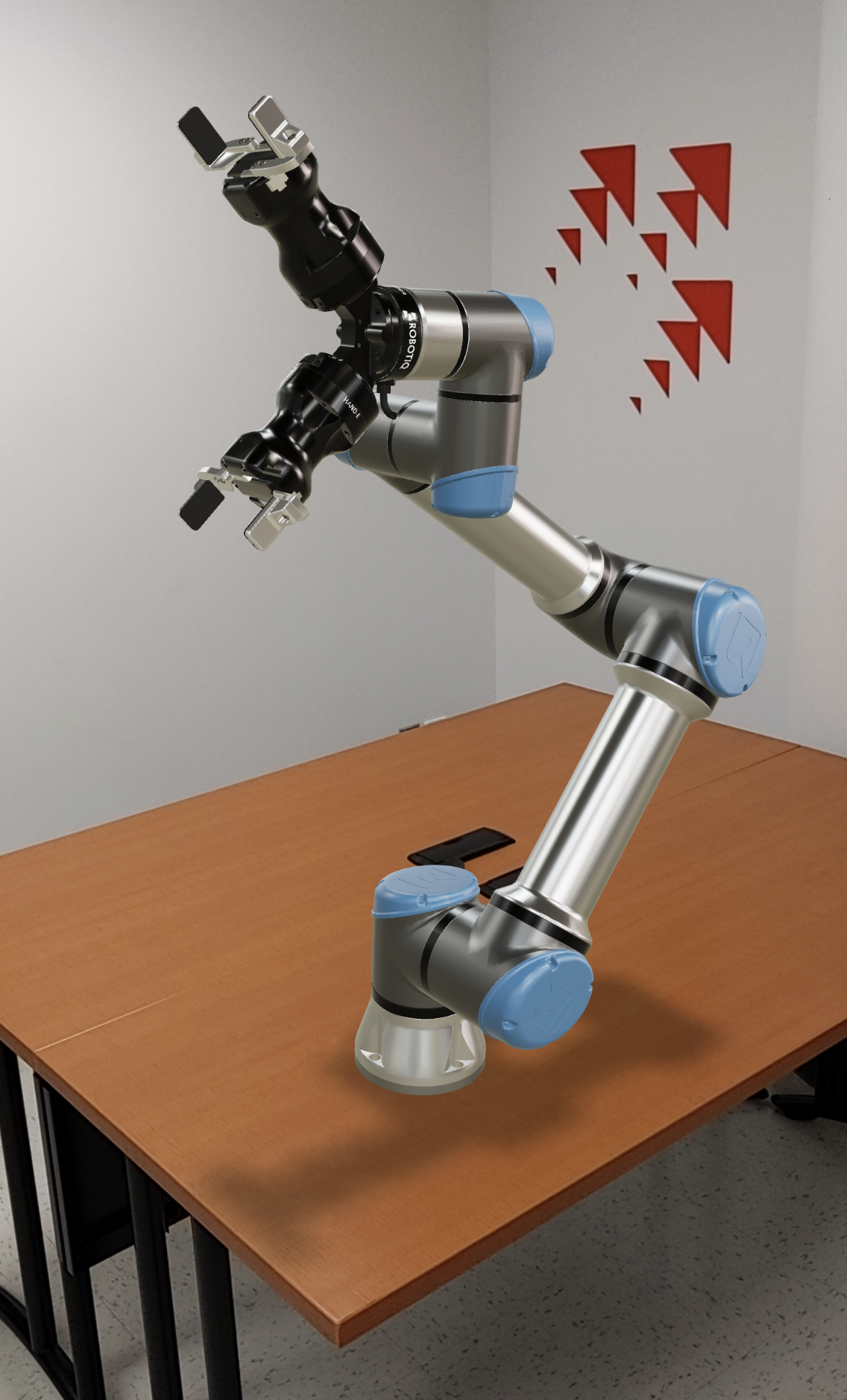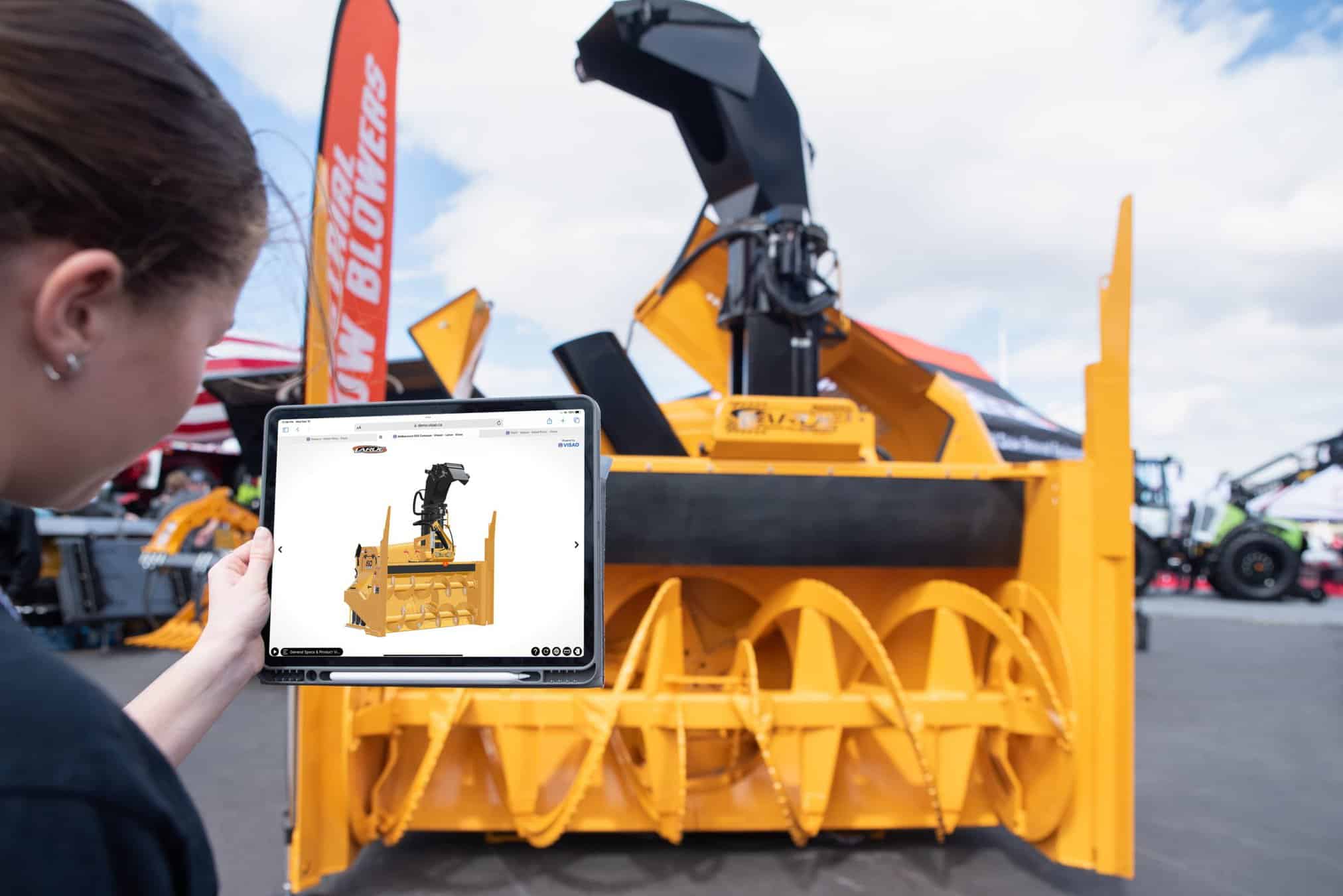In today’s rapidly evolving technological and business landscape, commerce businesses face the challenge of identifying the most profitable digital investments. As technology advances exponentially, it is crucial to develop a solid marketing strategy to enhance customer experiences and drive sales.
In this blog post, we uncover the potential of augmented reality technology and its ability to improve your sales outcomes, regardless of your industry, significantly.
Did you know that products incorporating 3D and augmented reality content experience a remarkable 94% increase in conversion rates? This statistic, revealed by a recent Shopify study, demonstrates the tangible benefits of ar applications in engaging customers and influencing their purchasing decisions.
Join us as we explore the world of augmented reality and unveil eight effective techniques to revolutionize your sales strategy. Discover how integrating augmented reality can elevate your business, exceed sales goals, increase sales and drive remarkable success.
8 Ways Augmented Reality Takes You There
1. Empower and Motivate Customers: Unleashing the Power of Comprehensive Product Information
Customers today complete 80% of the purchasing process on their own before speaking with a salesperson. This means that before making any sales pitches, businesses must make sure that their prospects have a thorough comprehension of the suggested products.
The best way to give clients useful information is to move away from static photos and data sheets and toward interactive 3D augmented reality experiences.
The following example shows how Visao user Metal Pless improved its visual presentations by integrating interactive 3D viewers and an augmented reality feature.
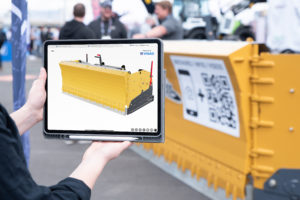
Through the utilization of augmented reality (AR), customers gain the ability to interact with your company’s assets, allowing them to explore and manipulate the products of their interest. This immersive experience enables users to zoom in and out, observe specific movements, and engage with animated 3D representations. To further enrich the online experience, interactive annotations, images, videos, and hyperlinks can be seamlessly incorporated into your digital twins. Leveraging these AR features as a powerful marketing tool enhances the sales process by providing customers with in-depth information about the products they are considering purchasing.
Can you give an example?
A compelling example of AR technology implementation can be observed in Larue’s trade show exhibition. Larue effectively employed augmented reality technology to showcase their diverse product range, providing attendees with immersive shopping experiences that left a lasting impression.
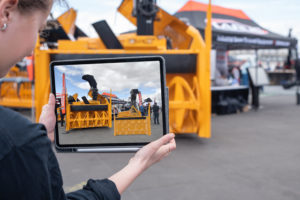
2. Unleash Personalization: Elevating customer satisfaction to New Heights
According to a study conducted by Epsilon, 80% of consumers are more likely to make a purchase from a company that provides personalized shopping experiences. The most convincing way to reveal specific features that cannot be seen with images is to integrate ar into any real-life setting.
This interactive digital platform lets buyers make smarter purchase decisions with instant visualization of their unique solution, automatic pricing, and even view realistic animations that showcase the best features, all on one screen. This interactive personalized shopping experience also allows the consumer to visualize a fictitious object in any physical environment through reality technology. This technology eliminates the need for consumers to go to physical retail stores, for a probably fruitless and time-consuming trip.
To sum it up, using these AR experiences in your marketing campaigns can not only make you stand out from the competition but also save you time and money while also exceeding customer expectations. In addition, 3D product, as seen through an immersive shopping experience, increases customer engagement, which results in a significantly higher conversion rate for your business.
Learn more about 3D product configurator and how it can upgrade your marketing
3. Dominate Online Demos: Ignite Action with a 3D Visualization Tool
When it comes to online product demonstrations, creating an interactive 3D experience is not only simple but also highly effective in delivering value to potential customers.
By developing an interactive 3D product demonstration, you go beyond merely showcasing features and create a powerful, action-oriented customer experience first. Step-by-step annotations, animations, and specific camera views guide customers through the demonstration, ensuring clarity and engagement. To further enhance the impact of your sales demonstration, you can enrich it with relevant text, images, videos, and links to data sheets, providing comprehensive insights.
One of the greatest advantages is the ease with which your sales team can connect with prospects worldwide. By sharing a user-friendly tool through a URL, prospects can access the demo within minutes. This seamless accessibility also extends to augmented reality (AR) options, allowing customers to immerse themselves in a memorable and immersive experience.
When you consider these elements, it becomes evident that you are not just selling product features but offering customers an unforgettable experience. By harnessing the power of interactive 3D visualization tools, you have the opportunity to deliver personalized experience of exceptional value and forge lasting connections with your customers.
4. Break the Mold: Augmented Reality Technology – Your Weapon to Stand Out from Competitors
A recent survey conducted by EcomDash revealed that an impressive 45% of online buyers believe that augmented reality (AR) expedites the decision-making process. Despite this compelling finding, a study published by Mobile Marketer sheds light on the current state of adoption within the retail industry, indicating that only a mere 1% of retailers have integrated augmented or virtual reality into their customers’ shopping experiences.
Want to learn how our client brought their tradeshow experience to another level?
This stark contrast presents a vast untapped market where businesses have the opportunity to stand out and engage prospects in more captivating ways. Why? Because augmented reality enables clients to experience complex inventions within their own environments, allowing for true 1:1 size representation and facilitating space planning.
What does the AR market currently look like?
The global augmented reality (AR), virtual reality (VR), and mixed reality (MR) market reached a remarkable value of US$28 billion in 2021, with projections indicating it could surpass US$250 billion by 2028. Embracing augmented reality sets your business apart, ensuring that your products leave a lasting impression on customers and increasing the likelihood of post-engagement with your sales staff.
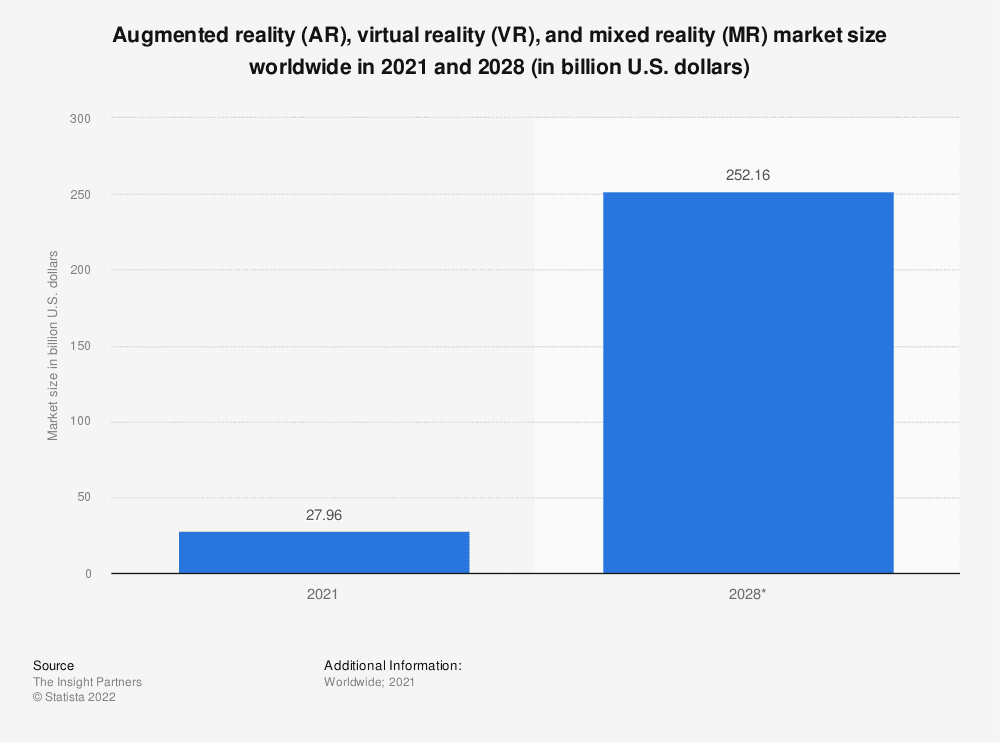
This advantage becomes even more significant when considering that your competitors have yet to provide this immersive option. By leveraging the power of augmented reality, you position your brand at the forefront of innovation, enabling customers to not only remember your products but also foster a deeper connection with your brand.
5. Engage with Impact: Unleashing User-Friendly Product Presentations
In the realm of e-commerce and online shopping, delivering a seamless and user-friendly experience is paramount. Especially when dealing with intricate product categories, clarity and efficiency in conveying your offerings are key to smooth the buying process.
How does AR technology compare to virtual reality (VR)?
That’s where augmented reality (AR) takes the lead, offering unparalleled user-friendliness. With AR, all you need is your smartphone—no fancy gadgets are required. It is an innovative technology that’s already integrated into most devices, making it accessible to a wide audience. On the other hand, virtual reality (VR) technology necessitates specialized headsets, which not everyone has access to. Plus, let’s not forget that many consider VR headsets/smart glasses uncomfortable and cause motion sickness.
How does mobile AR work?
By simply scanning a QR code with your phone’s camera (no mobile apps are needed!) , you can unleash the power of mobile AR here. Position your chosen product in your space and manipulate it as you please. It’s a hassle-free way to provide customers with answers to their burning questions and create an engaging shopping experience.
And here’s an eye-opening statistic: According to a study by LCP360, websites with a digital tour (powered by AR) hold visitors’ attention five to ten times longer compared to those with static images alone. AR has the uncanny ability to capture customer interest, making your brand appear more sophisticated and desirable.
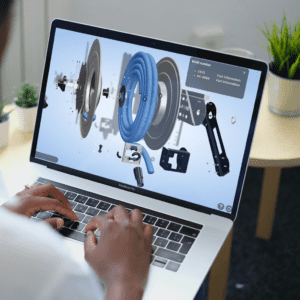
The best part? AR requires no software downloads. It seamlessly integrates into web pages, making it a convenient and versatile solution for both clients and businesses alike.
In a nutshell, when it comes to user-friendliness, AR reigns supreme. It’s easily accessible and hassle-free, and sparks customer satisfaction by providing interactive and immersive experiences. By embracing AR, you can take your online shopping to the next level, engaging customers and making your brand stand out from the crowd.
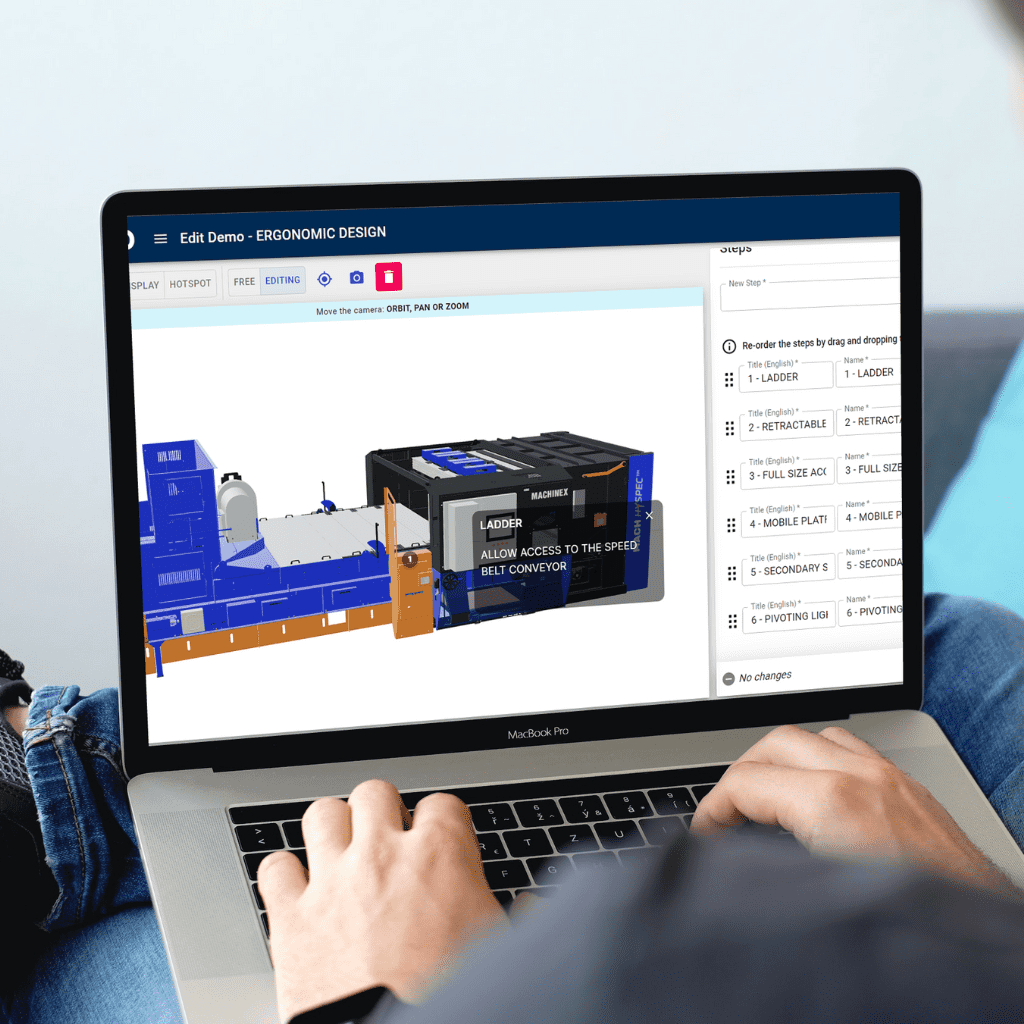
Curious about using our platform?
Discover the ease of creating 3D viewers with Visao’s online platform! Our new whitepaper proves just how easy it is – even for employees with no 3D experience. Don’t just take our word for it, see for yourself!
6. Harnessing Powerful Content for Social Media and Ads
We are bombarded with an overwhelming number of banner ads. On average, people come across approximately 1,700 of these ads each month. However, here’s the reality check: They only end up watching about half of them. But fear not, there’s good news on the horizon.
Static VS 3D ads
Ads that incorporate 3D animations, augmented reality features, and captivating 360-degree views have proven to be game-changers. In fact, these dynamic ads boast an astounding 267% higher click-through rates compared to their static counterparts. How does it work, you ask?
This innovative form of display promotion invites users to interact with your products, creating a truly memorable experience. Gone are the days of passive browsing. With augmented reality, users can engage, explore, and visualize your products in a way that leaves a lasting impression. It’s a whole new level of customer experience that captivates attention and drives action.
But that’s not all. With 3D animations, your marketing team can effectively convey a wealth of information that surpasses what traditional static ads can achieve. The depth and interactivity of 3D animations offer a more convincing and immersive customer experience, particularly in the realm of online retail.
Pro tip
If you’re looking to engage your target audience, LinkedIn, Facebook, and Twitter are the top social platforms where 3D models can truly shine. These platforms provide a fertile ground to captivate and connect with your final consumers, ensuring that your brand and products stand out from the competition.
7. Stay Ahead of the Game: Outshine Competitors at Tradeshows and Events
Gone are the days of lugging around heavy, cumbersome machinery to showcase your products at events. Not only is transporting these equipment a logistical nightmare, but it also comes at a hefty price tag. And let’s not forget the additional cost of finding storage space for these bulky machines. But fear not; there’s a game-changing solution on the horizon.
Enter augmented reality (AR), the ultimate saviour of your event woes. With an AR application, your sales team can effortlessly present any product virtually through a tablet or computer, eliminating the need for cumbersome physical demos. Imagine the convenience and cost savings!
Tradeshow costs
Here’s a surprising fact for you: Trade show costs have skyrocketed by a staggering 257% over the past two decades. But fear not, with the power of a 3D visualization tool, you can slash those costs and still make a big impact at events.
Now, let’s talk about engagement. Traditional exhibits often struggle to captivate visitors, let alone potential prospects. They lack that wow factor, failing to convey innovation and ignite curiosity. But with 3D models visualized through AR technologies, your sales team can offer attendees an interactive and immersive digital experience that sets your booth apart.
Can you give an example?
Picture this: Your exhibit becomes an attention magnet, drawing in more people and captivating them in ways your competitors can only dream of. You have seconds to capture prospects’ attention and entice them to explore your booth. AR technology makes it possible for attendees to discover your product or service within seconds, even if they don’t intend to engage with your sales team immediately. It’s a powerful tool that sets the stage for your sales experts to work their magic.
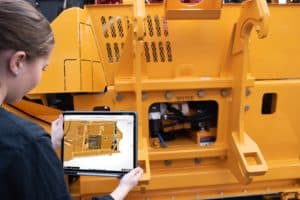
8. Empower Customers through AR-Enhanced Education and Trust
By bridging the gap between the mortar stores and digital realms, customers can interact with virtual representations of products, examining intricate details and simulating usage. This immersive educational experience empowers customers to make informed purchasing decisions.
Research highlights a fascinating insight: when customers have access to more detailed information, through various AR experiences and interfaces, they rely less on branding as an indicator of quality. This underscores the significant impact of mass adoption of these AR experiences in shifting customer focus towards understanding a product’s value, surpassing reliance on brand recognition alone.
Niche products or companies particularly benefit from AR-powered education. These offerings often possess unique features or cater to specific customer needs, necessitating comprehensive explanations to showcase their worth. AR provides a visually appealing and easily digestible platform to present complex concepts, enhancing customer understanding and engagement.
Can you give an example?
Consider a niche machinery product like a specialized CNC engraving machine for fine jewelry. With AR apps, customers can virtually visualize the machine in action, observing its intricate engraving process on various precious metals and gemstones. They can interact with a virtual interface, adjusting settings and exploring different engraving patterns and depths. This same AR app-enhanced experience empowers customers to understand the precision and versatility of the machinery, leading to customer satisfaction and increased confidence in its ability to meet their specific jewelry engraving needs.
How can I implement AR technology into my customers’ shopping experience?
When venturing into implementing AR in your customers’ shopping experience, you have two main options: partnering with AR software providers or developing a custom solution from scratch.
Software providers offer pre-built AR platforms that can be easily integrated into your existing infrastructure, saving time and resources. Look for reputable providers that offer a range of AR features, customization options, and seamless integration capabilities.
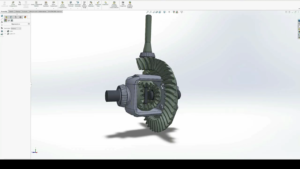
On the other hand, building an AR solution from scratch allows for complete control and customization, but it requires expertise in AR development and significant investment. Assess your specific needs, budget, technical expertise, and resources to determine the best approach for your business
Ready to implement AR in your business?
With Visao‘s web-based platform, manufacturers can bring their industrial designs to life through interactive visualizations and augmented reality displays. From marketing strategies to sales processes and trade shows to product customization, Visao empowers e-commerce and businesses of all sizes to tap into the endless sales opportunities that AR offers.
Don’t miss out on the chance to elevate your store and brand, engage customers on a deeper level, and stand out from the competition. Request a live demo of Visao’s cutting-edge 3D and augmented reality technology solutions today.
